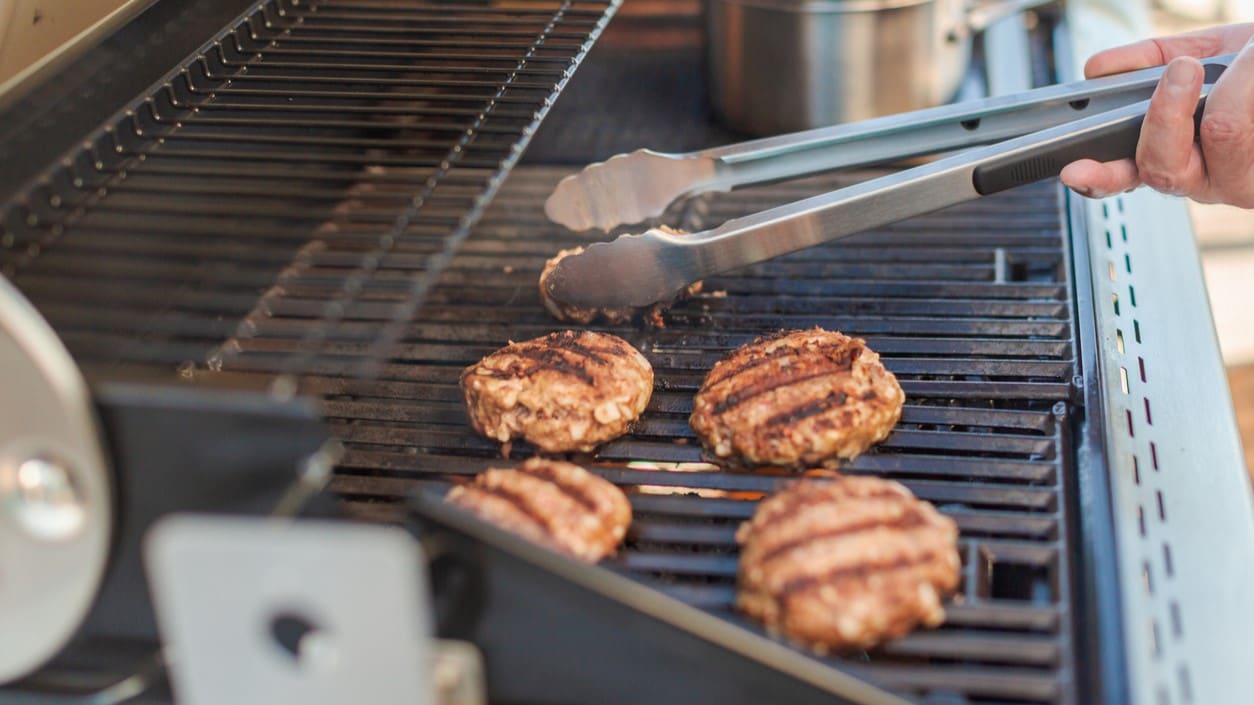At a glance
We looked at traits of restaurants linked to safe ground beef practices. These traits included use of a thermometer to be sure raw ground beef was not undercooked. We also looked to see if workers prevented cross contamination of raw ground beef and other foods or utensils. Learn what restaurants and food safety programs can do to improve their ground beef practices.

Key takeaways
Restaurant management should support kitchen staff in efforts to become food safety certified.
Food safety programs should develop interventions to improve ground beef practices. These interventions should focus on independent and sit-down restaurants.A
Why this is important
E. coli,B a germ often found in raw ground beef, causes many foodborne illnesses each year. Hamburgers made from ground beef are often the source of these germs. These germs can make people sick if hamburgers are undercookedC (not cooked to a high enough temperature to kill the germs). These germs can also make people sick if they get into other food or onto other surfaces (cross contaminationD).
We don't know much about why some restaurants prepare and cook ground beef more safely than others. If we know more about differences between these restaurants, we can focus recommendations for training and policies accordingly.
Cooking ground beef
What we learned
EHS-Net found that chain restaurantsE and restaurants with food safety certified kitchen managersF (CKMs) may have safer ground beef practices than other restaurants.
Safer ground beef practices in chain restaurants compared to independent restaurants include the following:
- Managers in chain restaurants
- Were more likely to say that they take the final temperature of hamburgers with a thermometer
- Were less likely to say that they serve rare or medium-rare hamburgers, even if customers ask for it. Rare or medium-rare hamburgers are undercooked.
- Were more likely to say that they take the final temperature of hamburgers with a thermometer
- Workers in chain restaurants
- Were less likely to wipe their hands on cloths or aprons after touching raw ground beef
- Were less likely to use the same utensils on raw ground beef and other foods without washing between uses
- Were less likely to wipe their hands on cloths or aprons after touching raw ground beef
Safer ground beef practices in restaurants with CKMs compared to those without CKMs include the following:
Managers in restaurants with CKMs:
- Were more likely to say that they take the final temperature of hamburgers with a thermometer
- Were less likely to say that they serve rare or medium-rare hamburgers, even if customers ask for it
More information
Journal article this plain language summary is based on
Other summaries related to certification:
- Outbreaks and certified managers
- Certification and critical violations
- Food safety certification and knowledge
More practice summaries and investigation summaries in plain language
FDA Food Code
About this study
- Sit-down restaurant: Restaurant where customers receive table service, rather than ordering at a counter.
- E. coli: Germ that causes foodborne illness.
- Undercooked burger: A burger that is not cooked to the FDA recommended temperature of 155°F.
- Cross contamination: Spread of germs from one surface or food to another by contact.
- Chain restaurant: One with the same name and operations as other restaurants. Restaurants with the same name in many cities are chain restaurants.
- Certified kitchen manager: A restaurant manager that has passed a test about food safety.
